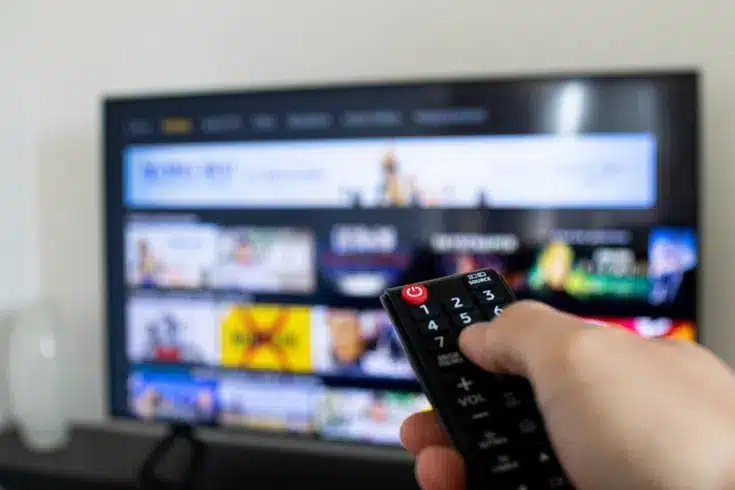Internet Usage Time Surpasses Television Viewing Time for the First Time: An Explanation of Media Usage Trends

On August 25, 2021, the Ministry of Internal Affairs and Communications (Japanese Information and Communications Policy Research Institute) released a report for the year 2020. This report continuously monitors the duration and time of use, usage rate, reliability, etc. of internet media such as the internet and social media, and information and communication media such as television and radio. The aim is to clarify the relationships between media and changes in usage patterns.
In this article, we will provide an overview of Chapter 5, “Usage Rate of Main Social Media Services/Applications etc.” from the “2020 Survey Report on the Use of Information and Communication Media and Information Behavior”.
Methodology of This Survey
This survey, which has been conducted annually since 2012 (making this the 9th year), is a large-scale public opinion survey on media, alongside the “National Media Evaluation & Contact Survey” by the Japanese Newspaper Association and the “National Public Opinion Survey on Media” by the Newspaper Communication Research Association.
The participants were 1,500 men and women aged 13 to 69, selected by random location quota sampling at 125 points nationwide based on the actual proportion from the Basic Resident Register. The survey was conducted from January 12 to January 18, 2021, using a combination of diary-style surveys and questionnaire surveys.
The diary-style survey (two weekdays and one holiday) was conducted using a diary-style survey method (24 hours, 15-minute increments) to investigate the usage time and concurrent usage of devices and content such as TV, newspapers, and the Internet.
The questionnaire survey investigated the ownership and usage of devices such as PCs, smartphones, and feature phones, as well as the usage of major websites and apps. It also examined the importance and trustworthiness of various types of information from traditional media such as TV and newspapers and various media on the Internet.
Usage Time and User Rates of Television, Internet, Newspapers, and Radio
Part I is titled “Usage Time and User Rates of Information and Communication Media/Devices,” and Chapter 1 is “Usage Time and User Rates of Main Media.” In the section on “Usage Time and User Rates of Television, Internet, Newspapers, and Radio,” the survey results show that:
- The average usage time for all age groups continues to be longest for “real-time television viewing” and “internet use” on both weekdays and holidays.
- For the first time, the average usage time for “internet use” on weekdays has exceeded that of “real-time television viewing” across all age groups.
In the first survey conducted in 2012 (Gregorian calendar year), the usage time for “real-time television viewing” versus “internet use” on weekdays was 184.7 minutes versus 71.8 minutes. This has now changed to 163.2 minutes versus 168.4 minutes, with internet usage time exceeding for the first time. This is thought to be due to an increase in “internet use” time on weekdays rather than a decrease in “real-time television viewing” time. The ratio of the two on holidays is 223.3 minutes versus 174.9 minutes, suggesting that television as a medium still appears to be popular.
However, when we look at this by age group, we find that:
- The average usage time for “internet use” has increased in all age groups on both weekdays and holidays, especially among teenagers and people in their 20s.
- The average usage time for “real-time television viewing” increases with age, exceeding 300 minutes at 334.7 minutes for people in their 60s on holidays.
In the case of teenagers, the weekday “real-time television viewing” versus “internet use” is 73.1 minutes versus 234.2 minutes, and for people in their 20s, it is 88.0 minutes versus 255.4 minutes. Compared to 195.6 minutes versus 130.0 minutes for people in their 50s and 271.4 minutes versus 105.5 minutes for people in their 60s, it is clear that younger generations are moving away from television.

Internet Usage Time and User Rate by Activity
Chapter 2 discusses “Media Usage Time and User Rate by Content Type”. Let’s look at the “Internet Usage Time and User Rate by Activity”, in other words, what people are doing on the internet, broken down by age group.
- Across all age groups, the longest activity on weekdays is “Reading/Writing Emails” at 40.8 minutes, while on holidays, “Watching Video Posting/Sharing Services” takes the lead at 58.0 minutes.
- When broken down by age group, the average usage time for “Watching Video Posting/Sharing Services” among teenagers on holidays, and “Viewing/Writing on Social Media” and “Watching Video Posting/Sharing Services” among people in their 20s on holidays, all exceed 100 minutes.
That’s the breakdown.
What’s interesting is that the average usage time for “Reading/Writing Emails” on weekdays is 18.4 minutes for teenagers, but it increases to 39.6 minutes for people in their 20s, and the trend is similar for older age groups. This trend is also seen in “Viewing/Writing Blogs or Websites”, where teenagers spend about half the time on these activities compared to other age groups.
So, what are they spending their time on? The activities are “Viewing/Writing on Social Media”, “Watching Video Posting/Sharing Services”, and “Playing Online Games/Social Games”. Both teenagers and people in their 20s spend the most time on these activities.
While the actual time spent on games is not that significant, the time spent on “Viewing/Writing on Social Media” by teenagers on weekdays (72.3 minutes) and holidays (85.4 minutes), and by people in their 20s on weekdays (84.6 minutes) and holidays (110.8 minutes), and the time spent on “Watching Video Posting/Sharing Services” by teenagers on weekdays (90.2 minutes) and holidays (131.8 minutes), and by people in their 20s on weekdays (73.8 minutes) and holidays (115.9 minutes), can be considered noteworthy in the daily lives of teenagers and people in their 20s.
Internet Usage Time and User Rate by Main Devices
Chapter 3 is titled “Internet Usage Time and User Rate by Main Devices”. The key findings are:
- On both weekdays and holidays, the average internet usage time on “mobile devices” is longer for people in their teens and twenties, significantly exceeding 200 minutes on holidays.
- As for the user rate of internet usage on “mobile devices”, it exceeds 90% for people in their twenties and thirties on weekdays, and for people in their twenties on holidays.
The average internet usage time on weekdays is 105.8 minutes for all age groups, with 186.8 minutes for teenagers and 177.4 minutes for people in their twenties. On holidays, it is 126.4 minutes for all age groups, with 247.5 minutes for teenagers and 230.7 minutes for people in their twenties.
Furthermore, the user rate of internet usage on mobile devices is 93.9% for people in their twenties on weekdays and 94.4% on holidays. For people in their thirties, it is 90.8% on weekdays.
These are all very high figures.

Main Device Usage Rates
Part II is titled “Usage Rates of Devices and Various Services,” and Chapter 4 is “Usage Rates of Device-related Services.” The key findings are as follows:
- The usage rate of “smartphones” has increased to 92.7% across all age groups. Since the survey began in 2012 (Heisei 24), there has been a consistent increase.
- The usage rate of “smartphones” exceeds 90% in the age groups from teens to 40s. It has also consistently increased in the 50s and 60s age groups, exceeding 80% even in the 60s.
This is the current situation.
The usage rate of smartphones, which was 32.0% across all age groups in 2012 (Heisei 24), has increased to 92.7%. In the 20s age group, it has reached 99.1%. Even in the 50s and 60s age groups, the rates are 89.5% and 81.2% respectively.
Furthermore, the usage of tablets has also consistently increased since 2012 (Heisei 24), with a usage rate of 39.2% across all age groups. The usage rates in the teens and 20s age groups are almost the same, but the 30s and 50s age groups have higher usage rates of 44.0% and 47.2% respectively. Tablets can also be said to be frequently used devices.
On the other hand, the usage rates of e-book readers and smartwatches remain at 6.7% and 6.8% respectively across all age groups.
Usage Rate of Major Social Media Services/Apps
Chapter 5 is about the “Usage Rate of Various Services (Social Media Services, Apps, News Services, etc.)”. In the section on “Usage Rate of Major Social Media Services/Apps”, we find that:
- For all age groups, the usage rate of LINE has consistently increased, exceeding 90% for the first time in this survey. It also exceeds 90% in each age group from teens to 40s.
- The usage rate of Facebook has decreased in all age groups except for those in their 40s and 60s, falling below 20% among teenagers, the lowest usage rate among all age groups.
- The usage rate of Instagram has consistently increased across all age groups, and in this survey, it is on par with Twitter and follows LINE in terms of usage rate.
- Among video sharing platforms, YouTube has a high usage rate, exceeding 90% among those in their teens to 40s.
The usage rate of LINE across all age groups is 90.3%, with the highest being 97.7% among those in their 20s, and the lowest being 76.2% among those in their 60s, which is still a high usage rate.
The usage rate of Twitter across all age groups is 42.3%, with 29.6% among those in their 50s and 13.5% among those in their 60s. However, it has a high usage rate of 67.8% among teenagers and 79.8% among those in their 20s. It is noteworthy that the rate drops sharply to 48.4% among those in their 30s.
The usage rate of Facebook across all age groups is 31.9%, and it has been stagnant for about the past five years. The highest usage rate is 48.0% among those in their 30s, but only 19.0% of teenagers use it.
The usage rate of Instagram across all age groups is 42.3%, with 69.0% among teenagers, 68.1% among those in their 20s, and 55.6% among those in their 30s. As the age group decreases, the usage rate increases. When looking at the gender ratio, the usage rate is higher among women at 49.4% compared to 35.3% among men. This reflects the fact that there are many young female users who actively post Instagram-worthy content.
The usage rate of mixi, which was 16.8% across all age groups in 2012, has decreased to 2.3%, and GREE, which was 11.8%, has decreased to 1.3%.
The usage rate of YouTube across all age groups is 85.2%, with 96.5% among teenagers, 97.2% among those in their 20s, 94.0% among those in their 30s, and 92.0% among those in their 40s. Even among those in their 50s, it is 81.2%, and 58.9% among those in their 60s, showing a higher usage rate as the age group decreases.
The usage rate of TikTok across all age groups is 17.3%, with 57.7% among teenagers and 28.6% among those in their 20s. It is popular among the younger generation, and its usage rate is expected to increase in the future.
On the other hand, the usage rate of Nico Nico Douga across all age groups is 14.5%, and it was revealed that there is no particularly strong age group.
In the next article, we will explain the overview of the “Usage Rate of Video Sharing/Distribution Services, etc.” in the same Chapter 5.
https://monolith.law/corporate/media-trust-purpose-trend[ja]

Introduction to Our Firm’s Measures
Monolith Law Office is a legal office with high expertise in both IT, particularly the internet, and law. There are areas where legal checks are necessary when operating media. Our firm handles everything from strategic planning related to intellectual property in IT and internet-related businesses, and entertainment areas such as music and movies, to contract relationships and litigation. We also have experience and know-how in various tasks, from creating internal guidelines for companies regarding issues related to the operation of media, such as quotations, to conducting due diligence (DD) in M&A. Details are described in the following article.
Category: General Corporate





















